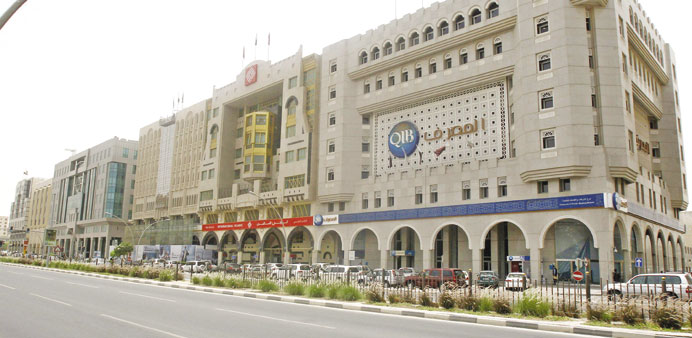The authorities are considering a reduction in the loan-to-deposit ratio, which the IMF says would further improve the strong liquidity profile of Qatar’s banking system and its asset quality.
By Pratap John/Chief Business Reporter
Qatar’s banks remain “well capitalised and profitable”, the International Monetary Fund said even as the global lender urged authorities to “continue carefully monitoring vulnerabilities” through an “enhanced early warning system”.
According to the IMF, “stress tests by the QCB (Qatar Central Bank) show resilience to plausible shocks” due to high capital and liquidity buffers. That said, deposits and credit are substantially concentrated, and asset quality is exposed to risks from high single party exposures.
The authorities are considering a reduction of the loan-to-deposit ratio, which the IMF said would further improve the strong liquidity profile of the banking system and its asset quality. Despite reduced reliance on international wholesale funding, a drying up of external liquidity could adversely impact the banking system. However, policymakers would have ample room to respond in this scenario.
Meanwhile, regional expansion of the largest Qatari banks could “stretch their risk management capacity” given the “turbulent macroeconomic developments” in many Mena (Middle East and North Africa) countries and the reliance on foreign funding could increase again when infrastructure projects pick up.
While the current situation does not seem to warrant policy action, policymakers should continue to closely monitor lending standards, concentration risks, and cross-border activities of banks, IMF suggested.
The QCB’s early warning system should be enhanced to identify risks and links across all sectors of the economy, the IMF said.
The authorities have made considerable progress on the financial sector regulatory agenda centred on establishing an umbrella advisory committee and adopting Basel III rules. The QCB governor has become the head of the Financial Stability and Risk Committee established by the 2012 Central Bank Law and serves as a chairman of all three regulatory agencies.
The QCB has taken over responsibility for the previously lightly-regulated insurance industry, and work is underway to produce joint risk-based analysis of the entire financial system.
In December 2013, the three main regulatory agencies published their Strategic Plan for Financial Sector Regulation until 2016, laying out an ambitious agenda for moving to risk-based regulation, expanding macro-prudential oversight, strengthening market infrastructure, and consumer and investor protection.
The final Basel III circular for capital, liquidity, and leverage ratios was issued in January 2014. The authorities continue to implement a number of macro-prudential measures.
Qatar has been granted emerging market status by MSCI, effective May 2014.
The IMF said there is further scope to increase transparency and improve the functioning of the QCB’s liquidity management framework. The central bank has taken several steps to alter its liquidity management operations; including capping commercial banks’ interest bearing deposits with the central bank and facilitating issues of T-bills and T-bonds.
The issuance has so far proceeded at fixed nominal allotments, with the short-term T-bill rates continuing to exhibit some volatility. The money market tightened during summer and fall of 2013, partly as a result of international events such as the Syrian crisis and negotiations related to the US budget and debt ceiling. The tightening was mostly reversed using a large liquidity injection in January 2014.
These developments underscore the need for sending clear signals to markets through a transparent and well structured liquidity management framework. The scope for the QCB open-market operations is limited due to low secondary-market liquidity, the IMF said.
Consideration should, therefore, be given to some flexibility in setting T-bill and T-bond issuance volumes to reduce the volatility of yields. Close co-ordination between the Ministry of Finance and the QCB would enhance liquidity forecasting.
“The fixed exchange rate regime remains appropriate for Qatar. The peg to the US dollar has anchored prices of tradables and provided stability to income flows and financial wealth given the dominance of dollar denominated hydrocarbon exports,” the IMF said.
Qatar benefits from developing ‘deep and liquid’ debt markets
Developing “deep and liquid” domestic debt markets can bring important benefits to Qatar, the International Monetary Fund has said.
These include funding for the large infrastructure investment programme as Qatar advances its diversification agenda, enhancing the monetary transmission mechanism, and facilitating liquidity management.
“Indeed, the government has been issuing local currency-denominated securities with the stated objective of domestic debt market development despite running large fiscal surpluses. While the government intends to reduce public debt over time, this would be achieved by trimming foreign borrowings and domestic loans, and the authorities would continue issuing government securities to support bond market development,” the IMF said.
The forthcoming creation of the domestic credit rating agency will support corporate bond issuance, and the public investment programme provides an opportunity to issue corporate bonds for revenue-generating projects.
Additional initiatives to improve consumer and investor protection and strengthen market infrastructure are envisaged in the strategic plan, the IMF said.

